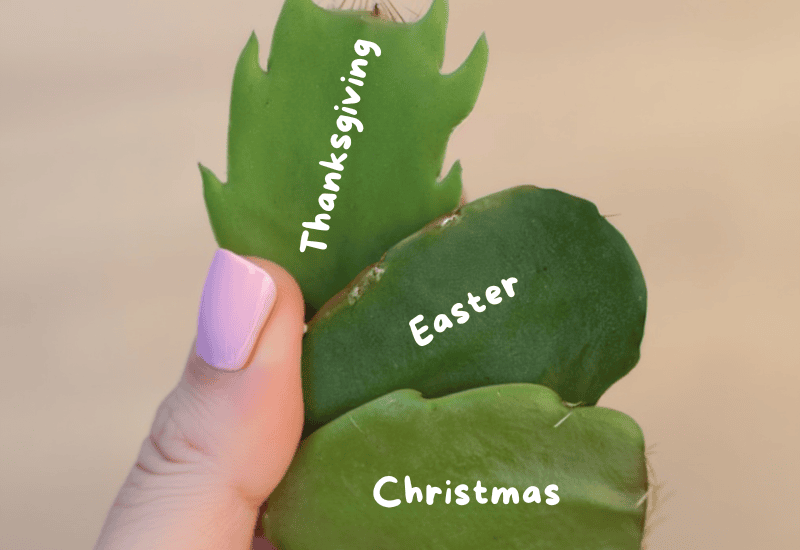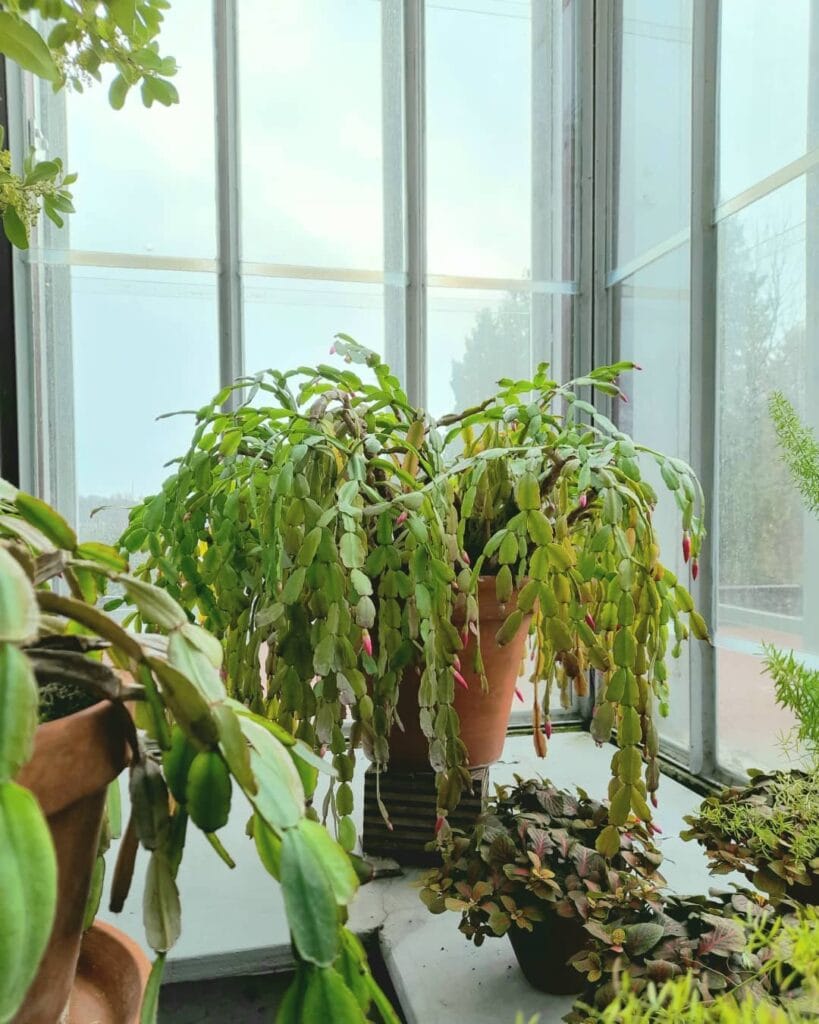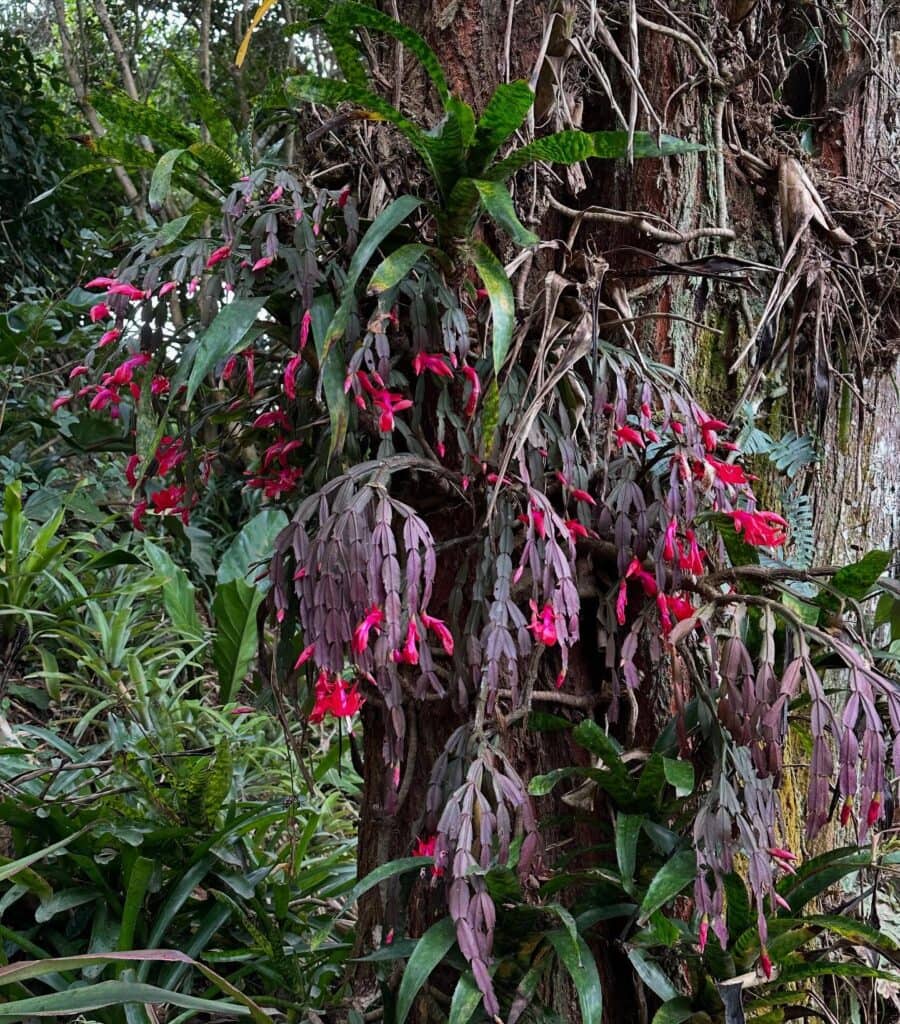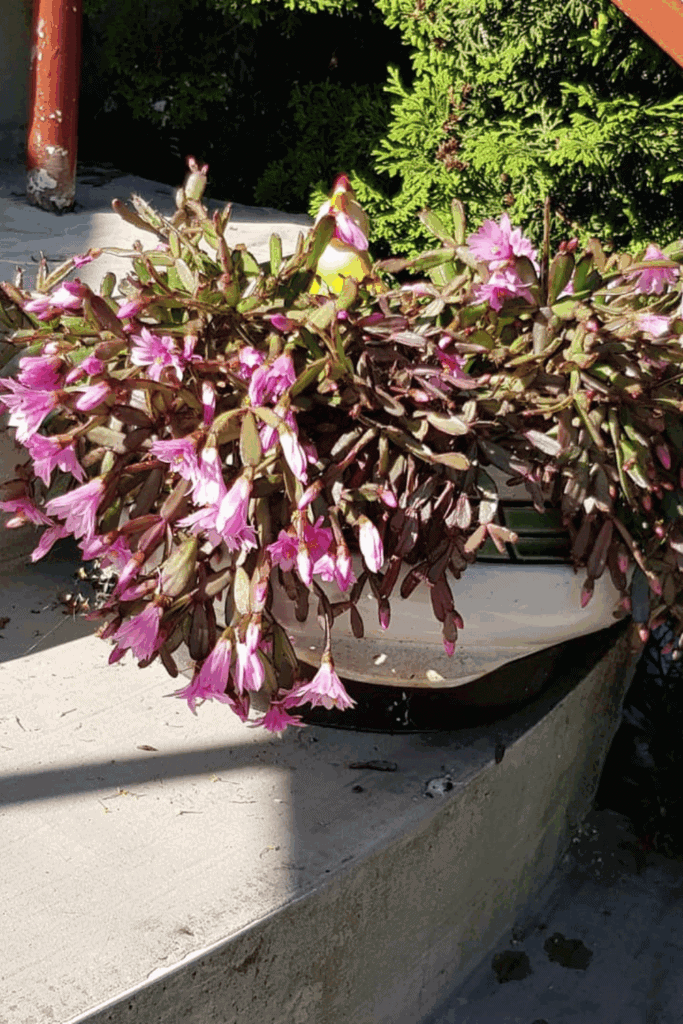
Holiday cacti have a way of stealing the spotlight just when we need it most. At a time of year when the garden is resting and daylight is scarce, these tropical plants put on a show—magenta blooms spilling over a windowsill in December, bright bursts of pink in late November, or star-shaped flowers greeting Easter in spring.
The tricky part is figuring out which one you actually have. Walk through any garden center and you’ll see the labels used loosely—Thanksgiving cacti sold as Christmas, Easter types called simply “holiday cactus,” and hybrids thrown into the mix without explanation. At first glance, they all seem nearly identical: jointed green stems that suddenly surprise you with color.
Fortunately, telling them apart isn’t as complicated as it seems. By paying attention to the shape of the stem segments, the angle of the flowers, and the timing of the bloom, you can identify your plant with confidence. So let’s sort through the details and answer the question once and for all: is your cactus celebrating Christmas, Thanksgiving, or Easter?
Clearing Up the Holiday Cactus Confusion
Before we dive into the different holiday cactus types, it helps to clear up some terminology.
Those “leafy” parts that hold the flowers? They aren’t leaves at all. True leaves on these plants are tiny, often brown or green, and easy to miss. The flat, jointed segments we all notice are actually stems—called cladodes or phylloclades. If you look closely, you’ll see little points or “teeth” along the edges, a trait botanists describe as dentate. Flowers sprout from small growth points called areoles, which is what officially makes these plants cacti rather than just succulents.

Here’s where things get tricky: garden centers and even botanists don’t always agree on what to call them. Thanksgiving cacti are often sold as Christmas cacti, and hybrids can be labeled either way. Easter cacti sometimes get lumped under the vague “holiday cactus” name. Even bloom times aren’t foolproof—some species flower earlier or later than their names suggest.
To complicate things further, the plants have bounced between genera over the years: once all Schlumbergera, now some are placed in Hatiora or Rhipsalidopsis. Most of what you’ll find for sale today are hybrids, especially Schlumbergera × buckleyi, a cross between S. russelliana and S. truncata.
So yes—it’s a confusing group. But don’t worry. With a few simple tips, you can still figure out which holiday cactus you have.
1: Christmas Cactus (Schlumbergera buckleyi )
When most people picture a Christmas cactus, what they’re really thinking of is Schlumbergera × buckleyi. This hybrid, first bred in 1852 by William Buckley at Rollisson Nurseries in England, comes from a cross of S. russelliana and S. truncata. Because it’s sterile, every Christmas cactus we grow today has been propagated from cuttings of those early plants—living heirlooms passed down through time. I often think the plant my bedstemor kept in her living room was probably one of these originals.

The true Christmas cactus is easy to recognize if you know what to look for. Its cladodes are smooth and elongated, with softly scalloped edges rather than sharp points. The blooms, which hang pendulously, appear between late November and February in glowing shades of red or magenta, though breeders are slowly expanding the color range.
Other species are sometimes grouped with the Christmas type, adding to the confusion. S. kautskyi, discovered in Brazil as recently as 1991, has blunt-toothed segments that vary in length and vivid purple-fuchsia flowers that appear much earlier, from late summer into November. S. orssichiana, also native to Brazil’s mountain forests, produces striking pink flowers held more upright, often blooming up to three times a year. Its hybrids are far more common in the houseplant trade than the species itself.

And then there’s S. russelliana, one of the parent plants of the true Christmas cactus. Its irregularly notched, rounded cladodes and trailing habit make it especially graceful, and its long, curving pinkish-red blooms appear later in the season—sometimes as late as April or even June. Formerly known as S. bridgesii, it’s often mislabeled in garden centers, but once you see its distinctive pendulous flowers, it’s hard to mistake for anything else.
Together, these species and hybrids form the broad picture of what we call the “Christmas cactus.” Some bloom earlier, some later, some in unexpected colors, but all share that same magical ability to flower in the middle of winter, just when we need the color most.
1: Thanksgiving Cactus ( Schlumbergera truncata )

If the Christmas cactus is the graceful traditionalist, the Thanksgiving cactus is the bold early riser. Its flowers often arrive right as we’re preparing for holiday meals, in shades of pink, orange, or white. Most cultivars hold their blossoms horizontally, giving them a more forward-facing look compared to the drooping flowers of the Christmas cactus.

The easiest way to identify it is by running your eyes along the edges of the cladodes. Instead of smooth scallops, you’ll see sharp teeth or claws. Sometimes there are just two points at the tip, sometimes three, but always with a distinctly jagged outline. That claw-like shape has earned it the nickname “crab cactus.”
I’ve found that Thanksgiving cacti can be overachievers. If they’re especially happy, they sometimes bloom again in February, long after their first flush of color has faded. Between the pointed cladodes, the horizontal flowers, and the earlier bloom window, it’s not too hard to separate this species from the others—once you know what to look for.
3: Easter Cactus (Rhipsalidopsis gaertneri )

The Easter cactus has always felt like the most surprising of the group to me. Just when I’m ready to give up on winter, it comes alive with a flush of star-shaped flowers. Unlike the tubular blooms of Christmas and Thanksgiving types, these blossoms open flat, almost like daisies, in shades of red, orange, or crisp white.

The way to tell an Easter cactus apart is by looking at the segments. They’re rounded rather than toothed, and many plants have tiny golden-brown bristles at the tips. These little hairs are actually the true leaves, though they’re easy to miss unless you know to look for them.

Many of the hybrids on the market trace their parentage back to Rhipsalidopsis rosea, a species with delicate, rose-pink blooms and a light fragrance. That one has a charming habit of flowering twice a year—once in early spring and again in fall. Between its rounded cladodes, soft edges, and unique bloom form, the Easter cactus sets itself apart if you take the time to notice the details.
4: Other Holiday Species
Beyond the familiar Christmas, Thanksgiving, and Easter cacti, there are a few less common relatives that rarely make it into grocery store displays but are worth knowing about if you’re a collector.
One of the most unusual is Schlumbergera lutea, sometimes classified under Hatiora. Unlike the typical pinks, reds, and purples, this species produces cheerful golden-yellow flowers, a color not usually seen among holiday cacti. In its native southeastern Brazil, it grows at high elevations, often on rocky outcrops rather than tucked into trees. Its triangular, slightly toothed segments give it a distinctive look, though in a mixed group of holiday cacti you’d only spot it when it’s in bloom.
Another striking example is Schlumbergera × reginae, a hybrid that combines the genetics of S. truncata with the dramatic blooms of S. orssichiana. Gardeners sometimes call it the “queen cactus,” and it lives up to the name with large, cascading flowers that can be streaked with multiple colors. It doesn’t just stick to a single shade—blooms may range from deep magenta to rose with white throats. While it’s still rare in the mass market, specialty growers are beginning to offer cultivars like the crimson ‘Dark Queen’ and the luminous ‘Bristol Queen.’

Written By
Amber Noyes
Amber Noyes was born and raised in a suburban California town, San Mateo. She holds a master’s degree in horticulture from the University of California as well as a BS in Biology from the University of San Francisco. With experience working on an organic farm, water conservation research, farmers’ markets, and plant nursery, she understands what makes plants thrive and how we can better understand the connection between microclimate and plant health. When she’s not on the land, Amber loves informing people of new ideas/things related to gardening, especially organic gardening, houseplants, and growing plants in a small space.
